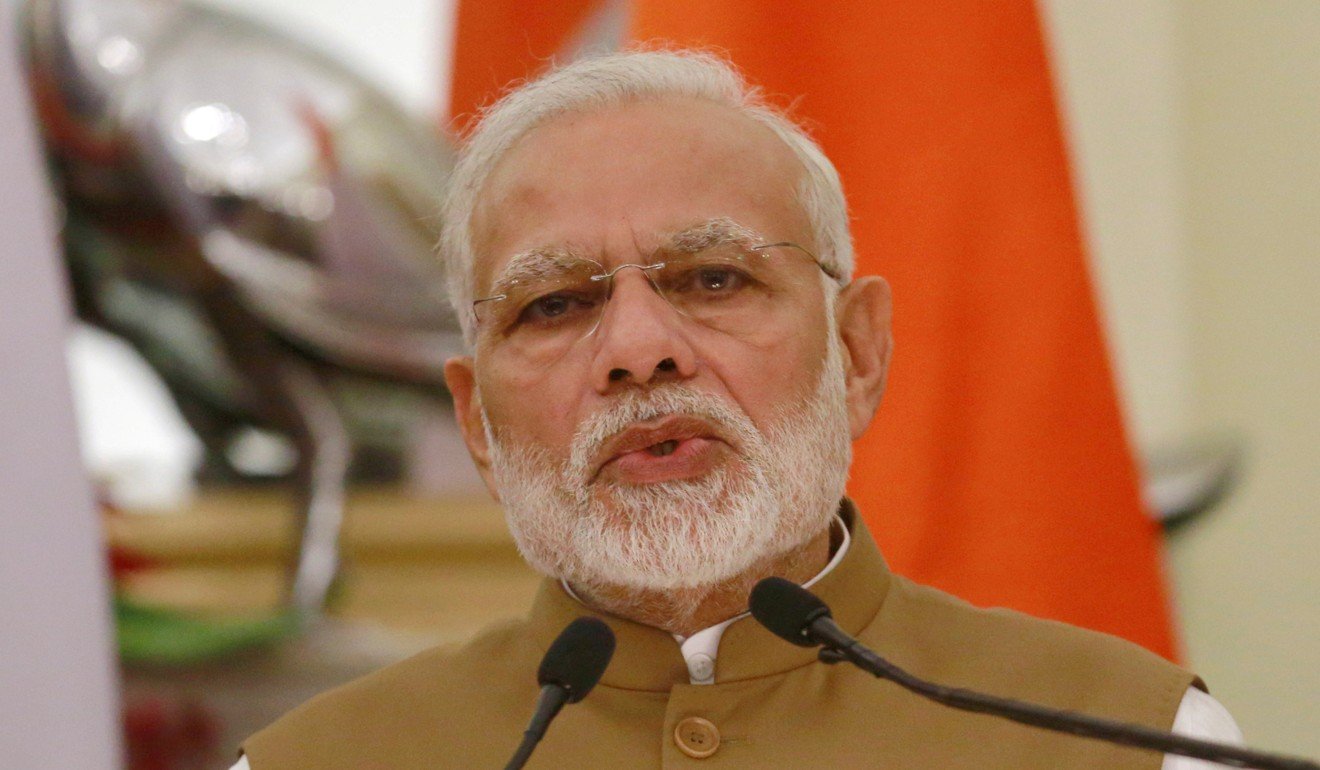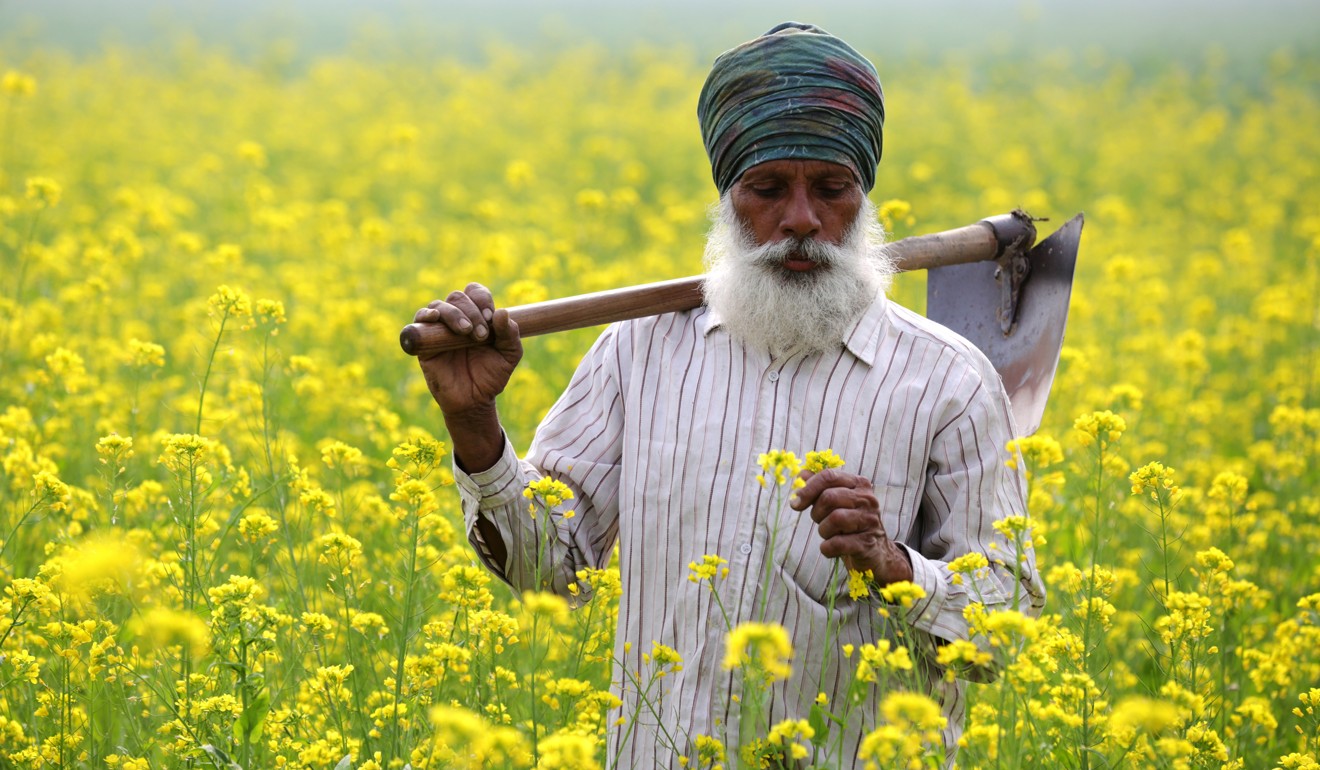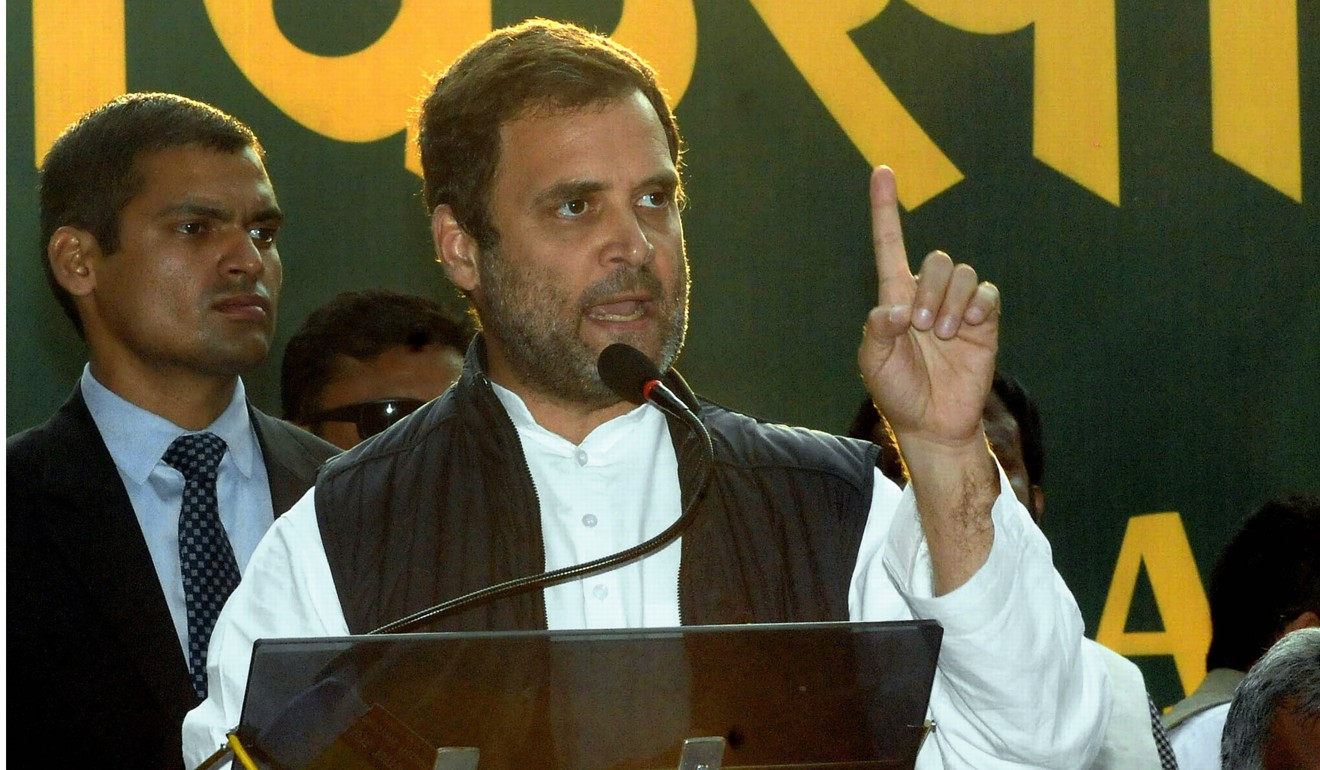
How the humble onion could determine the outcome of India’s upcoming elections
- Disenchantment with the faltering profitability of farming has emerged as a political variable. But how much of a risk does it pose to the government?
Onion prices have a long and layered relationship with Indian politics, having played a role in shaping election results since 1980.
Usually governments squirm (and opposition parties rejoice) when the price of the staple is too high for consumers, but this time around – with a few state poll results due on Tuesday and general elections around the corner – the problem is the opposite: Prices received by onion farmers are distressingly low.

A grower in Maharashtra recently made news when he sent all the money he received for his produce – a paltry 1,064 rupees (US$14.90) for 750 kilos (1,653 pounds) – to the prime minister’s charitable fund as a mark of protest.
A growing disenchantment with the faltering profitability of farming has emerged as a political variable. But how much of a risk does it pose to the government?
One state election where that question may get answered is in Madhya Pradesh. This central Indian state, ruled by Prime Minister Narendra Modi’s Bharatiya Janata Party (BJP), has a high dependence on agriculture. This goes beyond rice and wheat, the two cereals that have been the focus of India’s food self-sufficiency drive, to include soybeans, mustard, cotton, lentils and, of course, onions.

The core of New Delhi’s rural support programme is so-called minimum support prices, or MSPs – but these are not paid on every crop or to every farmer. The government, on average, buys 26 per cent of the country’s annual wheat cultivation and 28 per cent of its paddy output for its own granaries. But the figure for mustard is 4 per cent; and for onions, there are no federal government purchases.
State administrations have instead attempted to compensate growers on their own when onion prices have collapsed and farmer suicides have become politically embarrassing, but their resources are too limited to make a dent.

Similarly, a government-appointed committee found that only 6 per cent of India’s farmers have gained from selling wheat and paddy directly to a state procurement agency, meaning the vast majority are not even involved in the MSP system. State procurement of wheat is heavily concentrated in Punjab and Haryana, two northern states that – along with southeastern Andhra Pradesh – account for the bulk of government-sponsored rice purchases. For most farmers and most produce, the MSP and its lofty goal of giving farmers a 50 per cent margin on their cost of production is an empty slogan.
Thousands of farmers march through Delhi demanding minimum prices for crops
Even the Indian central bank got it wrong when it read a significant bump in MSP announced for 14 crops in July as a harbinger of higher inflation after the autumn harvest. The programme does not cover enough of the market to have such a dramatic effect. With market prices below state-procurement prices by as much as half in some instances, the bigger risk now is of disappointing rural demand.
Opposition leader Rahul Gandhi has promised to waive the loans of farmers in arid northwestern Rajasthan within 10 days of forming a government. Exit polls suggest his Congress Party may wrest the state from Modi’s BJP in Tuesday’s count. He has made similar promises to voters in Madhya Pradesh, and its neighbouring state of Chhattisgarh.

In commodities like cotton, soybeans and onions, which display high price volatility, the solution lies in boosting the cultivators’ storage capacity so they can avoid distressed sales. Financing against warehouse receipts is picking up, but it is either not available or too expensive for crops whose prices swing wildly.
From overuse of groundwater in cereal production and stop-and-go export policies that depress India’s shares of world markets, there is much in need of fixing. None of it can be accomplished by any government over its five-year term.

So all that is going to be debated as election results trickle in will be if the current spate of rural discontent, on display late last month as farmers marched to the national capital, is politically manageable for Modi. India’s stocks and bonds fell on Monday, and the rupee slid against the dollar, amid rising political uncertainty.
Exit polls suggest a tight contest between the ruling BJP and the opposition Congress Party in Madhya Pradesh and Chhattisgarh. Farmers and households already know the price of the humble onion. Politicians will know on Tuesday.


